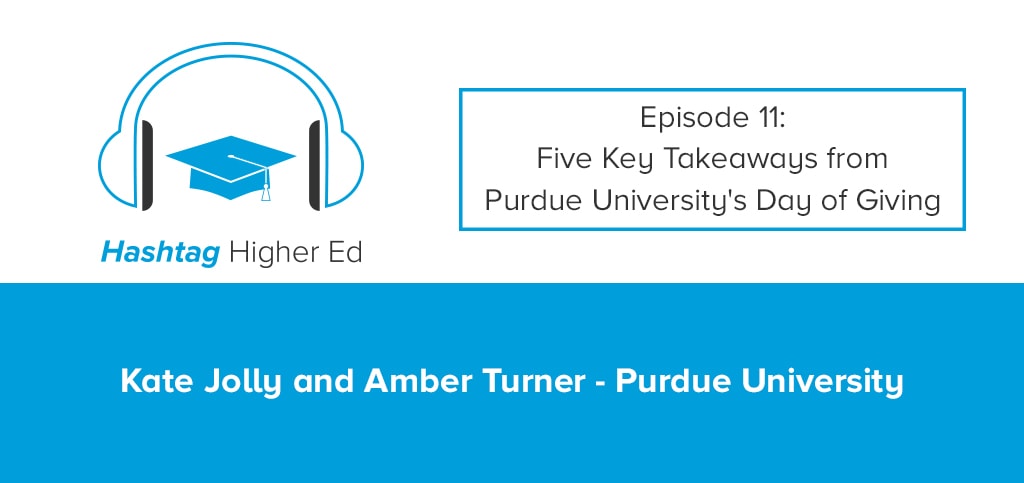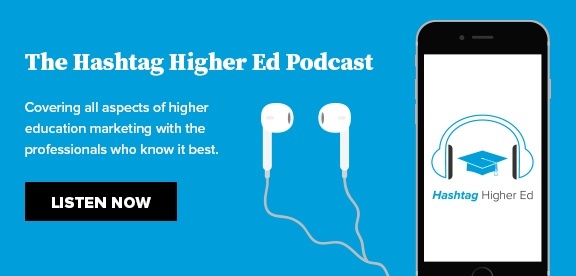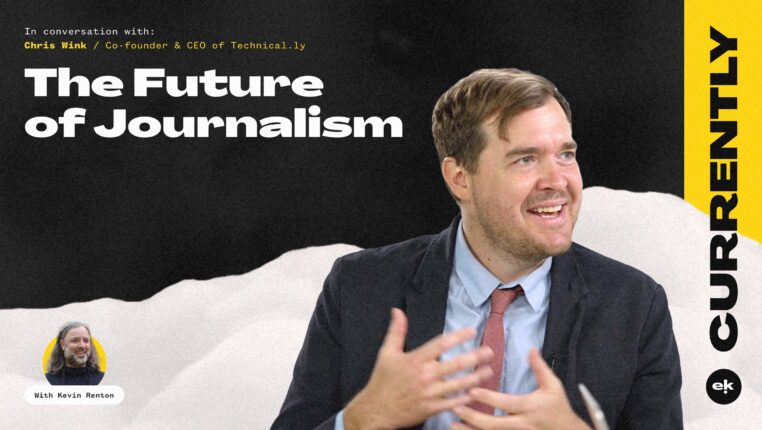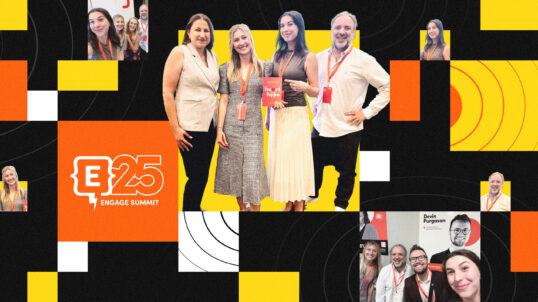The weather may still feel like summer, but according to the calendar, fall has officially begun. And while it may be hard to believe, it’s likely that many alumni and donor relations departments are already planning for Giving Tuesday. Last year, $177 million was raised on Giving Tuesday, and 2,399,092 total social media engagements occurred, making Giving Tuesday one of the biggest digital fundraising days of the year.
Purdue University holds its Day of Giving in April, but regardless of the timing, there is a lot you can learn from the Boilermakers when it comes to digital fundraising. Purdue launched its first Day of Giving in 2014, and in the years since, it has grown from a feel-good campaign to grow their donor pool to a full-blown 24-hour online driven social media fundraising event.
With that in mind, we were thrilled to welcome Kate Jolly, Purdue University’s Director of Digital Fundraising, and Amber Turner, Purdue University’s Senior Director of Annual Giving and Stewardship, to the Hashtag Higher Ed Podcast. In this episode, Kate and Amber share five key takeaways from running a 24-hour social media fundraiser, how the Purdue University stewardship team has evolved since its first Day of Giving, and some of their favorite moments from Days of Giving past.
On Launching Purdue University’s First Day of Giving
“At the end of 2013, our Vice President for Development approached our Annual Giving team with a big idea concept,” says Turner. “We brainstormed about how we could get more [donor] participation. So while the dollar amount is phenomenal, don’t get me wrong, the participation is really what we’re looking for. So we wanted to increase the number of new donors, which was our primary goal, and in doing so we thought a student audience would be the best approach to take.
We started brainstorming and had a few student initiatives, and while we were planning, we were really looking to make a splash, so we targeted the entire Purdue community to come together for this one event and it really paid off. We’ve had great success with that approach and engaging the entire campus community in participating around one central message to come together and make a difference.”
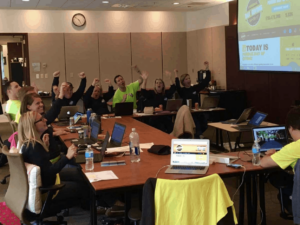
Purdue University’s “War Room” after raising over $18 million – breaking the previous year’s record.
On Planning for a 24-hour Fundraising Event
“We’re always looking for different events throughout the year, and we really look to our retail peers or just other peers outside of higher ed, because they have such great ideas and we try to tailor those ideas to our day of giving,” says Jolly. “So we’re always looking for those ideas, but we typically start our planning in October. I will say a caveat was in 2014, when we signed contracts and started planning our day in January. I would not recommend a four-month timeframe for planning a day of giving.”
After four years of planning, executing, and reflecting on Purdue University’s Days of Giving, Kate and Amber have learned a thing or two. They boiled down their many lessons into five key takeaways for this podcast. You can hear more about each key takeaway on the podcast, but we’ve included a glimpse at these important lessons below.
- Create a Campus-wide Commitment
“We look at the top-down approach. Our Vice President for Development is our key champion of the day,” says Turner. “She really embraced our big idea and helped us run with it. She also worked really hard to make sure she got the President’s buy-in. When you have that type of top-down approach, it’s really easy to engage whatever audiences or units that you have within your institution.” - Engage Major Gift Officers
“In order for our students and young alumni to feel like their $10 makes a difference and that the day is much bigger than themselves, they really need to feel like they own that grand total at the end of the day, versus ‘I just gave this little amount towards that total. No, I was part of something that raised X amount of dollars,’” says Turner. “Our major gift officers really make that possible. Because while 90% of our fundraising comes from major gifts and offline gifts, 90% of our participation comes from online during the day.” - Create a Unifying Message
“Opportunity Granted was what we utilized in 2014 and really have found a way to weave it in all four years. At the end of the day, opportunity granted is all-encompassing for the Purdue community, so our radio station can harness that message; our cancer center, while they don’t have students with scholarship support, can use opportunity granted. It’s really an all-inclusive approach and allows us to brand the day because everybody is using it,” Turner says. - Create a Toolkit
Jolly says that the Purdue team seeks to give participating units and college more than they would ever need to be successful in marketing their Day of Giving. “We have a lot of elements in our toolkit. We have email copy, event announcements, radio copy, a save the date card, a full-page advertisement for a magazine, a fact sheet about all the challenges that happen on the day, logos and widgets for different websites. We also have social content for the month before the day that increases in cadence leading up to the day and then posts for every hour on the day of giving.” - Use Game Theory
“Our day would not be as successful without the different challenges,” says Jolly. “You can view all of our challenges by visiting our website, dayofgiving.purdue.edu, and clicking on the leaderboards tab. We have a main match challenge that all 62 main participating units participate in. You can win a percent of a $100,000, based on your percent of the overall total raised. And the reasoning behind that is so that every unit gets a little bit of something; they have some skin in the game.”
Special thanks to Kate and Amber for joining the Hashtag Higher Ed Podcast. You can find Kate and Amber on Linkedin, by searching for Amber Turner or Kathryn Jolly. You can also follow Purdue University on Twitter at @LifeatPurdue.
Listen to this episode, and previous episodes of the Hashtag Higher Ed Podcast, on Soundcloud, iTunes, Google Music, or wherever podcasts are found. To explore previous episodes of the Hashtag Higher Ed podcast and sign up for alerts regarding new episodes, visit our Hashtag Higher Ed hub.

